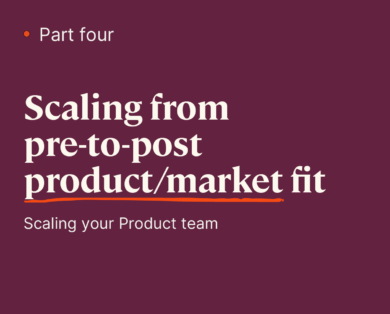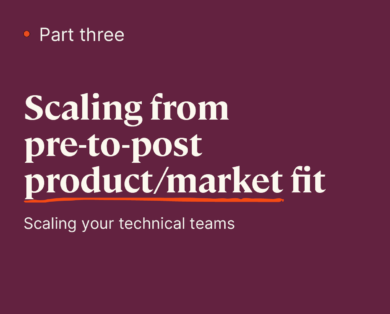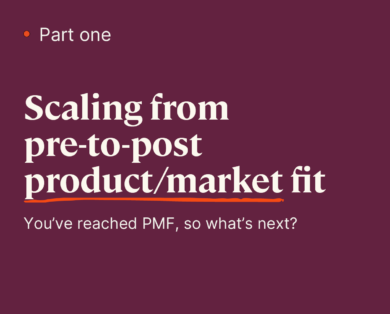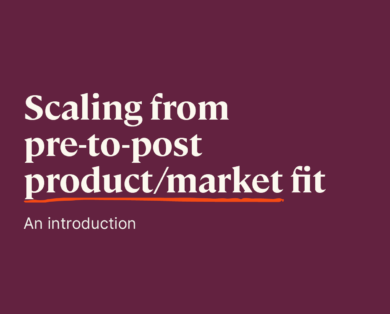- 15 January, 2025
When it comes to sales metrics, what do you really need to worry about?
“The nice thing about metrics is that there are so many to choose from.”
– Grace Hopper (adapted)
In a world where many executives are overwhelmed with sales and marketing metrics – from MQL generation to pipeline analysis to close rates and everything in between – I am writing this post in the spirit of raising things up to the CXO-level and answering the question: when it comes to sales, what do you really need to worry about?
(A previous version of this article originally appeared on Dave’s blog, Kellblog.)
I can burn it down to two basic questions:
- Are we giving ourselves the chance to hit the number?
- Are we hitting the number?
That’s it. In slightly longer form:
- Are we generating enough pipeline so that we start every quarter with a realistic chance to make the number?
- Are we converting enough of that pipeline so that we do, in fact, hit the number?
Translating that to metrics:
- Do we start every quarter with sufficient pipeline coverage?
- Do we have sufficient pipeline conversion to hit the number?
Pipeline coverage is the dollar value of the pipeline with a close date in a period divided by the new ARR target for that period.
Who owns pipeline coverage and how to measure it?
Pipeline coverage is the sum of the dollar values for each opportunity in the pipeline with a close date in a period divided by the new ARR target for that period. For in-depth material on understanding, managing, and analyzing the pipeline, see here.
The key things to know are:
- There are typically four pipeline generation sources and you should set quarterly goals for each. It’s best to do in terms of opportunity count, not pipeline dollars, because counting new opportunities is more tangible and less gameable than counting dollars.
- Avoid looking at rolling-four-quarter pipeline, first because you don’t have rolling-four-quarter sales targets and second, because doing so often results in a tantalizing pipeline where all the deals are two quarters out.
- Ownership for overall pipeline can boomerang back to the CEO because that’s typically the organizational convergence point of the pipeline source owners. To avoid this, the CMO should be delegated overall pipeline ownership and thus be responsible for not only hitting the quarterly goal for marketing-generated opportunities, but also forecasting next-quarter starting pipeline, and taking appropriate remedial action – working across all four sources – in the event of a projected shortfall.
- A reasonable pipeline coverage ratio is 3.0x, though it’s best to determine your coverage needs by analyzing your historical conversion rates.
- Sufficient pipeline coverage can mask a feast-or-famine situation across individual sellers, so periodically examine an opportunity histogram to ensure that opportunities are reasonably distributed across sellers. Depending on the specifics of a category, a seller can typically handle of total of 10 to 20 opportunities.
Who owns pipeline conversion? Sales.
Who owns pipeline conversion and how to measure and improve it?
Unlike pipeline coverage, which is usually a joint production of four different teams, pipeline conversion is typically the exclusive domain of sales. So, who owns pipeline conversion? Sales.My
Unlike pipeline coverage, which is usually a joint production of four different teams, pipeline conversion is typically the exclusive domain of sales. So, who owns pipeline conversion? Sales.
My favorite way to measure pipeline conversion is to take a snapshot of the pipeline at the start of week 3 of the quarter (to give sales management time to clean it up) and then divide the actual quarterly sales by the week 3 pipeline. For example, if you had $10M in pipeline at the start of week 3, and closed the quarter out with $2.7M in new ARR, then you’d have a 27% week 3 pipeline conversion rate
What’s a good rate? Generally, it’s the inverse of your desired pipeline coverage ratio. That is, if your CRO wants a 3.0x week 3 pipeline coverage ratio, they’re saying they expect a 33% week 3 pipeline conversation rate. If they want 3.5x, they’re saying they expect 28%.
Two important details: this should be analyzed on a to-go basis to account for any sales made before week 3 and you should be careful when the CRO wants more than about 3.5x coverage; it’s often a sign of a low-quality pipeline or a desire to overburden marketing as a form of insurance for sales.
There is a related rate that many companies measure, the SAL-to-close rate (STC), which in turn depends on their definition of SAL. To avoid confusion with the pipeline conversion rate, remember these two differences:
- The STC rate is count-based, not ARR-based — pipeline conversion divides dollars closed by pipeline dollars; STC divides opportunities closed by opportunities created.
- The STC rate is typically cohort-based, not milestone-based — it takes a cohort of SALs generated in a past quarter and tracks them until they eventually close.
While I think the STC rate is a better, more accurate measure of the percentage of opportunities that close, it is not the same thing as a week 3 pipeline conversion rate and can only actually be calculated on a lagging basis, maybe 1.5 times longer than the average sales cycle length.
There are numerous ways to improve pipeline conversion rates, and they generally fall into these buckets:
- Generate higher-quality pipeline. This is almost tautological because the definition of higher-quality pipeline is pipeline that converts at a higher rate. That said, higher-quality generally means “more, realer” opportunities because it’s well known that sellers drop the quality bar when pipeline is thin. Increasing the percent of pipeline generated within the ideal customer profile (ICP) is also a good way of improving pipeline quality as is using intent data to find people who are actively shopping. High slip and derail rates are often indicators of low-quality pipeline.
- Make the product easier to sell. Make a series of product changes, messaging/positioning changes, and/or create new sales tools that make it easier to sell the product, as measured by close rates or win rates.
- Make seller hiring profile improvements so that you are hiring sellers who are more likely to be successful in selling your product. It’s stunning how often this simple act is overlooked. Who you hire has a huge impact on how much they sell.
- Makes sales process improvements, such as adopting a sales methodology, improving onboarding and periodic sales training, and/or separating pipeline scrubs, forecast calls, and deal reviews so each can get their proper focus.
In conclusion, if you have a problem with sales performance, there are really only two questions on which you need to focus:
- Are we giving ourselves the chance to hit the number?
- Are we hitting it?
The first is about pipeline generation and coverage. The second is about pipeline conversion. Get them both right and you’ll grow like a weed.
 DAVE KELLOGG
DAVE KELLOGG 












